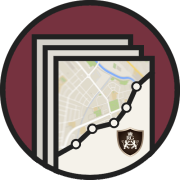What is the Difference between A Self Directed IRA and A Check Book IRA?
By Peter Rizzo

Every day I am asked what is the difference between a Self Directed IRA and a Check Book IRA. When someone looks to open a self-directed IRA, there are two different kinds of platforms available: the Custodian model and the Checkbook Control model. The Check Book IRA is a Self Directed IRA with a multitude of advantages.
In the Custodian model, the custodian reserves access to the IRA’s funds and assets, and any transaction must go through the custodian. The investor fills out a transaction form, and the custodian then executes the transaction.
The Checkbook Control model allows the investor to access the IRA’s funds via a dedicated checking account. Transactions can be executed immediately by merely writing a check without the involvement of the custodian. Which one is right for a specific individual depends on the investing strategy that he/she plans on pursuing.
The Custodian Model
Most of the self-directed IRA platforms out there follow the Custodian model. The major advantage of this model is the initial set-up cost. It is typically a few hundred dollars less than a corresponding Checkbook Control platform. However, the subsequent transaction and handling fees of the specific custodian can quickly escalate.
Because of this dynamic, the Custodian model is most suited for those who want to place an alternative investment and then let it sit quietly until they take a distribution. An example of this would be a piece of real estate that is not going to be developed. The investor would purchase the property, leave it until retirement age, and then cash out accordingly.
The main problem that arises with the Custodian model is that rarely does an investment sit for a long time without a need for any kind of maintenance. When dealing with real estate, property upkeep, tax bills, and administrative procedures are just some of the typical actions which will require custodian interaction and fees.
For an investor who foresees some kind of involvement with the investment, (and this is true in a majority of cases,) then the more prudent route would be the Checkbook Control model.
The Checkbook Control Model
Checkbook Control allows a self-directed IRA to place and manage investments without any custodial involvement whatsoever. It accomplishes this via the creation of a dedicated LLC (Limited Liability Company) and its accompanying checking account. The IRA funds are used to capitalize the new LLC, and the investor may now place virtually any investment by writing a check with the LLC’s checkbook. Hence, the name “Checkbook Control.” The custodian no longer plays a role in the investment process, and thus no further transaction or handling fees will be charged.
This model possesses two major advantages over the Custodian model.
The first, as we have seen, is an economic advantage. Many of the fees that can whittle away at an IRA’s holdings are eliminated by removing the middle man from the investment process.
The second major advantage is speed and ease of investment. With the Custodian model every transaction needs to go through paperwork and an authorization process. This can slow down a “fast track” deal, and it can prove especially cumbersome when trying to perform routine maintenance. Imagine trying to buy supplies at a local retailer, and in order to do so the investor has to get a preliminary receipt, fill out a form, receive a check, and only then actually purchase the supplies.
Checkbook Control allows for instantaneous investment and maintenance. For any asset that requires more than an initial purchase, the Checkbook Control model provides the more economical and investor friendly platform.
For more information on the Check Book IRA contact us at [email protected] or call 1-800-482-2760

